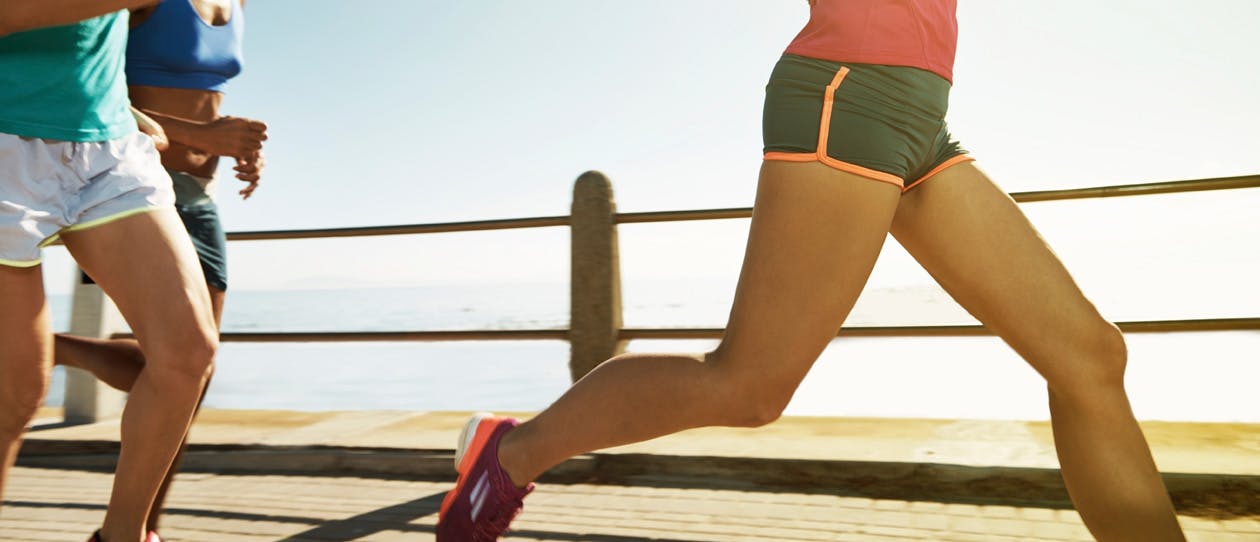
- Health hub/
- Tips & Advice on Improving your Energy Levels/
- Tips To Turn Your Walk Into A Run


When is it time for walkers to start running?
Walking is a wonderful form of exercise, and its low impact makes it a very safe and popular activity. But what is a positive for people who are overweight or new to exercise can become a negative for people who are fit. Because walking is gentle, it may fail to elevate your heart rate enough to achieve significant gains in cardiovascular fitness. By including a little running during your training walks (known as walk-runs), the intensity of your exercise will be increased, and this may stimulate a greater training response. Performing walk-runs is also a way to include interval training as part of your exercise routine, a strategy that is known to boost your fitness and fat loss. In other words, running is time efficient, because you can achieve more in less time. Some tell-tale signs that your body may be ready to tackle some light running during your walking routine include:
- You can walk briskly for 40 – 60 minutes comfortably
- You have a training history of several months, and have a reasonable level of fitness
- The only time walking makes you puff is on sand, hills or stairs
- You weight is at a healthy level
- Your legs feel strong and injury free
Training tips to get started on walk-runs
If you can identify with the signs listed above that indicate you are ready to introduce walk-runs into your exercise routine, the following tips can help you begin.
- Wear good shoes – While you might be able to get away with walking in any old shoes, running is a different matter. The impact through your feet during running is three times greater than walking, so make sure your shoes have good cushioning.
- Warm up – Because running is more intense that walking, you may need to perform a longer warm up. Make sure you have walked briskly for 5 – 10 minutes before attempting your first run.
- Start slow and steady – Start out with very short, slow runs, which will help your body gradually adapt to the rigours of running. For example, during a 40 minute walk, try 5-10, 15 – 30 second runs. Adjust the amount and duration according to your fitness and comfort. As your fitness improves over the coming weeks and months, increase your running speed, the frequency of runs during your walks, and the duration of your runs during your walks.
- Listen to your body while running – If you feel pain or discomfort in your knees, ankles, hips or chest when you start to run, stop immediately. Don’t push through pain. See your physiotherapist or doctor if you have any concerns
- Monitor how you feel the next day – It’s normal to feel a little stiff and sore around 24 hours after pushing yourself a little harder than normal. If this soreness is mild or non-existent, ramp things up next time. If you feel moderately sore, but the discomfort eases quickly over the next day or two, keep things at the same level. If you feel considerably sore, and it takes more than a day or two to dissipate, scale things back.
- Try treadmill training – If you own a treadmill or have access to one at work or the gym, then you are in luck. They can be very helpful in helping you progress from walking to running. You can easily measure the increase in speed needed to get you running (which you can come back to next workout). They can also help you monitor the duration of your runs (which is easier than constantly looking at a watch).
- Stretch afterwards – Make sure to cool down after your workout, and stretch all the major muscles groups that you have used during your workout, such as the front and back of your thighs, and your calves.
When should you avoid running?
There are some circumstances where it may not be suitable to try walk-runs. Stick to walking only if:
- You are recovering from an injury to the foot, ankle, knee, hip, leg or back.
- You are starting a new program of exercise or you haven’t exercised for several weeks
- You are overweight.
- You have existing knee or ankle problems.




